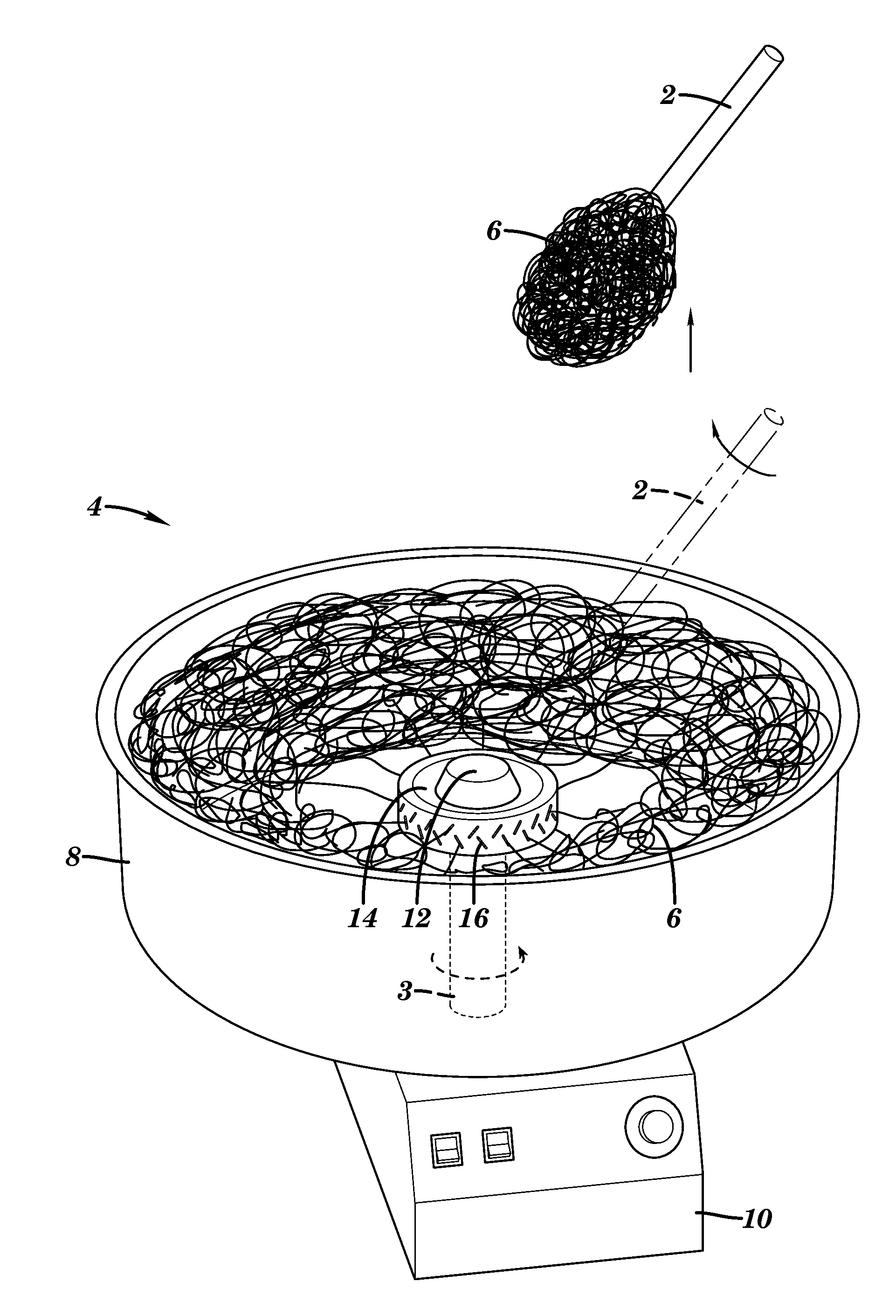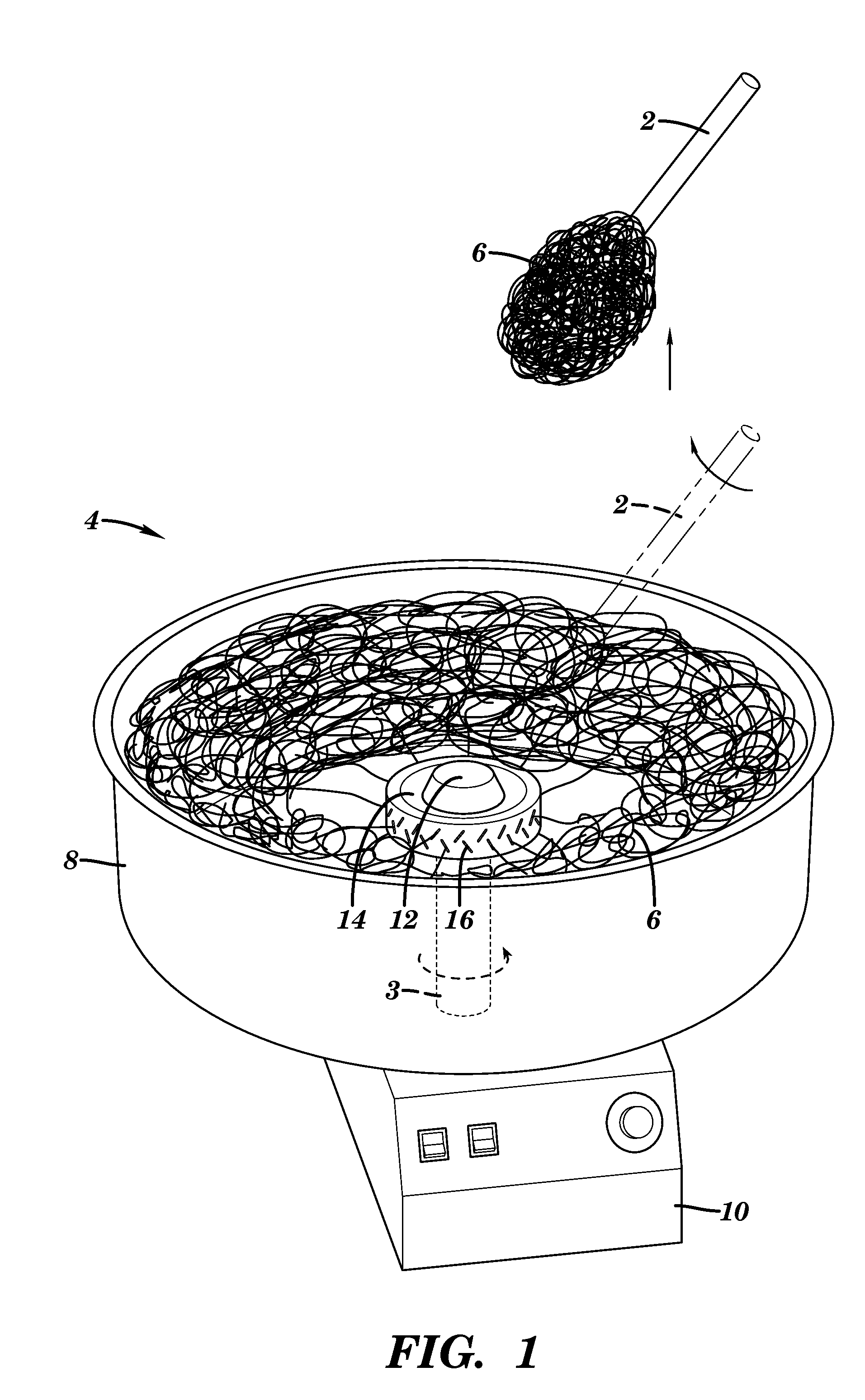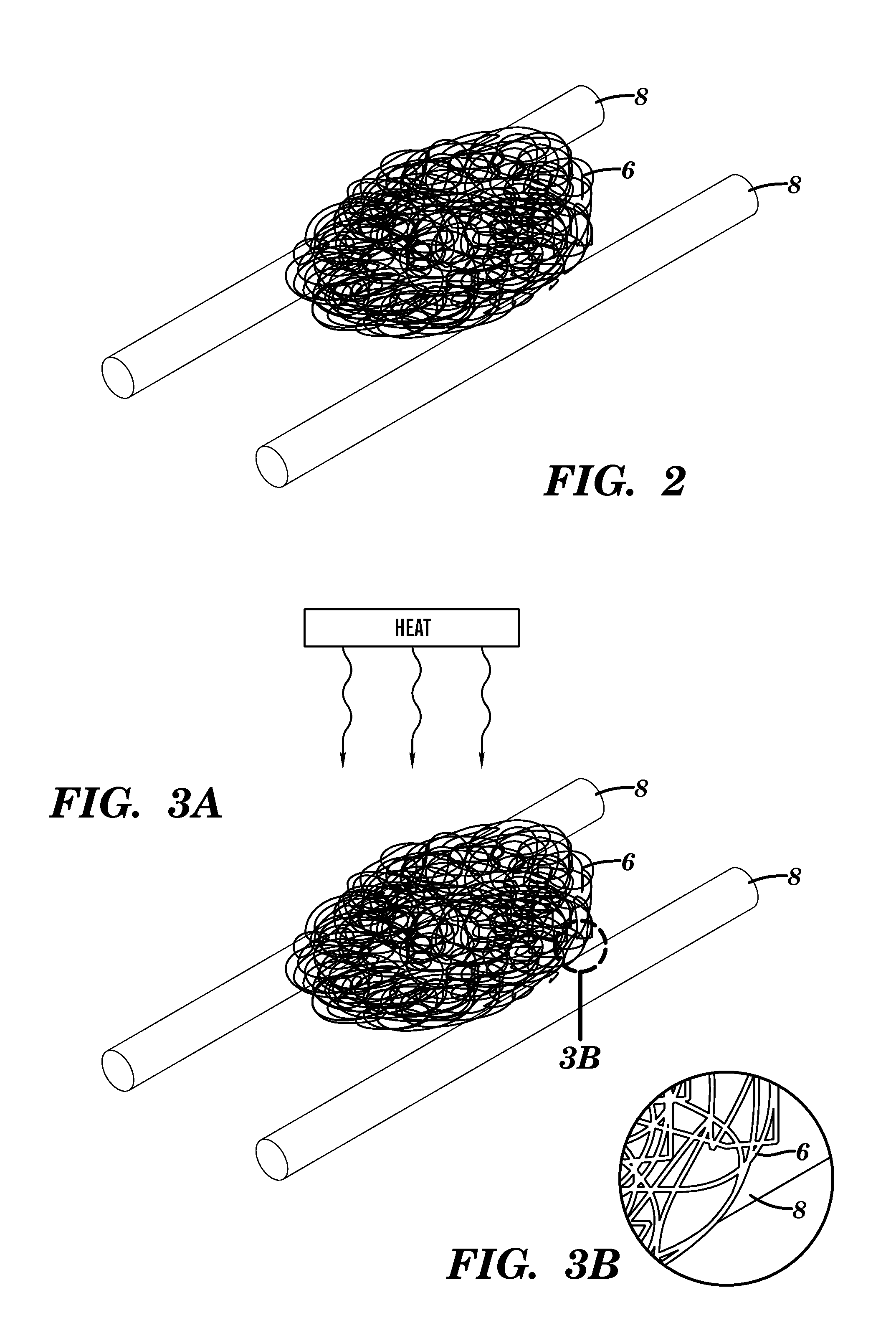Fabrication of a vascular system using sacrificial structures
- Summary
- Abstract
- Description
- Claims
- Application Information
AI Technical Summary
Benefits of technology
Problems solved by technology
Method used
Image
Examples
example 1
Sacrificial Microfiber Fabrication
[0104]To form the microchannels, melt-spun sugar fiber networks were produced using a modified cotton candy machine (The Helman Group, CCM-505). The cotton candy machine was modified to allow the user to exert more control over the process parameters. Store-bought granulated sugar was used in the machine. The heaters and the motor were each connected to variacs in order to control the extractor head temperature and rotational speed. The channel diameter and channel density may be controlled by varying the melt-spinning apparatus extractor head speed and temperature and by varying the fiber collection technique and subsequent handling, respectively (Bursac et al., Biochem. Biophys. Res. Commun., 361:847-853 (2007), which is hereby incorporated by reference in its entirety). The temperature of the extractor head was not varied from the default setting. Only 90V were supplied to the extractor head motor (as opposed to the line voltage), causing it to s...
example 2
Sugar Stick Fabrication
[0105]Sticks of sugar were formed by pouring molten sugar onto aluminum foil. First, store-bought granulated sugar was melted in a beaker using a hot plate at approximately 190° C. The sugar was removed from the heat before it burned. The molten sugar was manually poured into thin lines on aluminum foil. The speed with which the molten sugar was dragged along the foil determined the sugar stick diameter. The molten sugar cooled quickly at room temperature, and could then be used as a sacrificial material to make macrochannels.
example 3
[0106]The sugar sticks were embedded into the microfiber ball by hand. If the ambient humidity was not high enough to render the sugar sticks sticky, they were brought near running hot water to put them in a more humid environment. The sugar sticks were placed on the microfiber ball in the desired location, and the microfiber ball was then manually pressed into an appropriate size to fit in a Teflon mold.
PUM
| Property | Measurement | Unit |
|---|---|---|
| Diameter | aaaaa | aaaaa |
| Diameter | aaaaa | aaaaa |
| Diameter | aaaaa | aaaaa |
Abstract
Description
Claims
Application Information
 Login to View More
Login to View More - R&D
- Intellectual Property
- Life Sciences
- Materials
- Tech Scout
- Unparalleled Data Quality
- Higher Quality Content
- 60% Fewer Hallucinations
Browse by: Latest US Patents, China's latest patents, Technical Efficacy Thesaurus, Application Domain, Technology Topic, Popular Technical Reports.
© 2025 PatSnap. All rights reserved.Legal|Privacy policy|Modern Slavery Act Transparency Statement|Sitemap|About US| Contact US: help@patsnap.com



